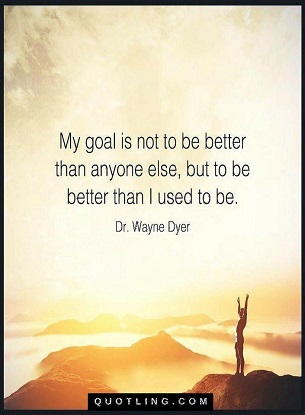A Coaching Model By Lisa Dorries, ADHD Coach, UNITED STATES
My Coaching Model the Path

My coaching model is called The Path and stems from my realization that I had the same thoughts for years. I was waking up with disempowering feelings day after day. Oh no, I am late again. I am so tired, and there has got to be more than this! I can’t keep this up. It was like going around the same mountain again and again.
After practicing nursing for 22 years, having a strong faith in God, and being a daughter and caregiver to my mother until her passing in 2018 at the age of 95, I needed a change and decided to pursue coaching. Through the coaching process, I learned that I was much more focused on pleasing others than pleasing myself and saw the negative impact that was having on my life. Through coaching, I gained the ability to change my thoughts, actions, and behaviors to move forward toward my goal. My coaching niche is people-pleasers who want to learn to believe in themselves and reach their personal goals.
Having a low opinion of yourself is not modesty. It’s self-destruction. Bobby Sommer
The Coaching Path Core Elements
P is for a shift in PERSPECTIVE that results from exploring your topic through powerful questions.
A is for APPRECIATIVE inquiry, a change process that emphasizes the best in a person or situation.
T is for making the TIME commitment to work on your goals, talking yourself up with positive affirmations, and trusting that you are capable of change and growth.
H is for HONORING the ones before you and honoring your life, no matter what you have or have not done up until this point.
My coaching model uses a process I call The Path, which involves the following components:
Self-Compassion

I believe people can change through the coaching process and that it starts with having self-compassion. By getting silent and listening to what you are saying about yourself, you can learn to catch and stop internal shaming. Self-compassion awakens when you have the desire to feel better and begin to foster self-compassion. Coaching can help you change your attitude and replace self-critical thoughts with more caring messages such as, “I am getting better, and this situation will not last forever.” As your coach, I might also have you explore. How can I be kinder to myself?
Intention
Now, let’s look at the aim. The Merriam-Webster Dictionary describes intention as “a determination to act a certain way: RESOLVE.” The intention is the driver behind what we are doing or thinking and informs our thoughts, words, and actions. Whether we are aware of it or not, we always have intent when we are doing something. Coaching can help make that intention transparent to unlock the driver behind our efforts. If we look at the definition again, we can see that intent is about focusing, developing determination, and learning to focus on one thing at a time. The International Coach Academy suggests that we consider the following questions about intent – What is the reason why I am doing this? What do I believe about myself concerning this situation?

Options for the Future
We will partner to identify your strengths, not weaknesses, and to focus on the future, not the past. We may need to look in the rearview mirror to get an idea of past situations, but we will not stay there. We will commit to forward-thinking and forward actions. You will be flying the plane, and I will be your copilot. I will not tell you what you need to do, as I do not have the ‘right answers.’ Instead, I will help you find solutions that are right for you and your family. All is achieved by increasing your self-awareness, uncovering hidden beliefs, and reframing your life’s situation. Let’s brainstorm. What can you do now to bridge the gap toward your goal?
We will celebrate your successes with a reflection on how far you have come, and I can be your accountability partner. What are the actions you need to do?
Examples of Things You May Experience During Your Coaching Path
Courage
Brene Brown has said vulnerability requires a person to have courage. Courage involves uncertainty, risk, and emotional exposure. On the Path, you will discover how deep you are willing to dig into your soul, and your passionate spirit, to move forward toward a life dream and goal.
Releasing Your Triggers
You likely have specific triggers from painful past experiences or relationships. Or from life routines that have become mundane. These triggers can upset and derail you, and your reactions often feel set in stone. Much like Pavlov’s dog, you might react a certain way repeatedly. What if you can interrupt those automatic feelings and reactions and learn to stop, think, and respond differently? You can learn to predict and understand your responses to certain people, situations, and yourself. You can also ask yourself – What is the other person’s perspective? What can I learn from this? Can I accept that I had a reaction and still move on?
Gratitude
Practicing gratitude can be a powerful agent of change. Writing down or thinking of one thing or the same thing you are grateful for every day is an excellent habit for shifting your mood and supporting your efforts.
Visualization

Through visualization, you will use the right side of your brain, the ‘creative team,’ to see things in a new or different way or see new things entirely. If you can see it, you can create it. Imagine yourself in the future. It’s within your reach. You can see it happening and understand what is important to you. Through visualization, goals, strategies, and tactics will happen effortlessly. It is your time to dream about how it will look and feel – your aha moment! (International Coach Academy.) However big or small this goal is, it is yours and yours alone. It will make you feel great, and it is good enough!
Coaching is not linear or a “one and done” kind of process. Setbacks can occur after a period of making progress toward your goals, and old responses can set in. Rather than viewing it as a simple part of the change process, you might feel stuck again. The good news is that soon you will be moving forward again because you will have learned a great deal about how you think and feel and what you need to do to get back on The Path. What do you want to achieve? What is your goal?
Let’s get started!
Learn How to Create Your Own Coaching Model
Your Coaching Model reflects your values,
philosophies and beliefs and must communicate who you will coach
and the problems you will solve. Read more about creating your coaching model